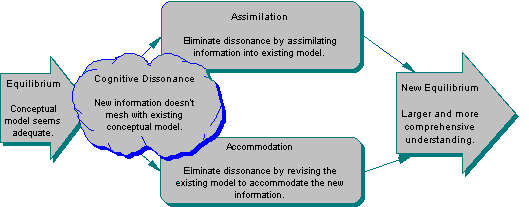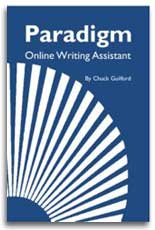As you begin to identify key issues and problems for further exploration, you may wish to consider the learning cycle model below. It is based on the work of the French learning theorist, Jean Piaget.
Equilibrium refers to the state of being intellectually satisfied, at ease, com fortable with one's understanding. Newly posed questions, issues, and prob lems disturb that equilibrium, creating cognitive dissonance, as we sense that our existing world view no longer works. In order to eliminate the dissonance and re-establish equilibrium, we begin problem-solving activities.

Through assimilation, for instance, we may be able to show that the problem is only apparent, a misperception, and that the new information, seen correctly, need not trouble us. Or, the problem may be more fundamental, as when discovery that the Sun does not revolve around the Earth, caused Renaissance scholars to re-examine and even discard closely held beliefs in order to recover intellectual equilibrium. This is the way of accommodation. Old ideas are discarded, new hypotheses proposed and tested, until eventually equilibrium is re-established and we are again intellectually at ease. Once the discord is resolved, the result is a more comprehensive and secure level of understanding-at least temporarily.
The exploratory journey undertaken here asks you to use your native problem-solving and learning processes to spot areas of cognitive dissonance, to explore the sources of that dissonance, and to engage in a conversation (partly written and partly oral) about ways of resolving your uncertainty.
Once the discord is resolved, the result is a more comprehensive and secure level of understanding—at least temporarily.




